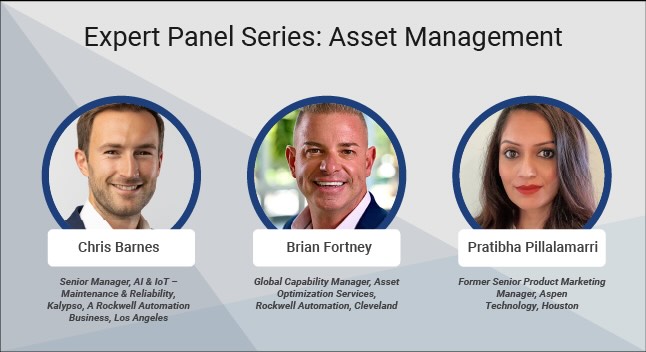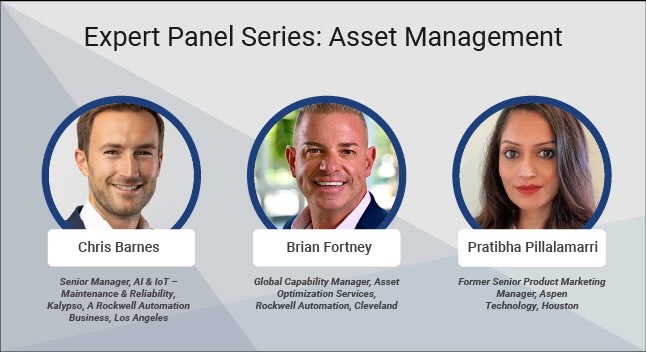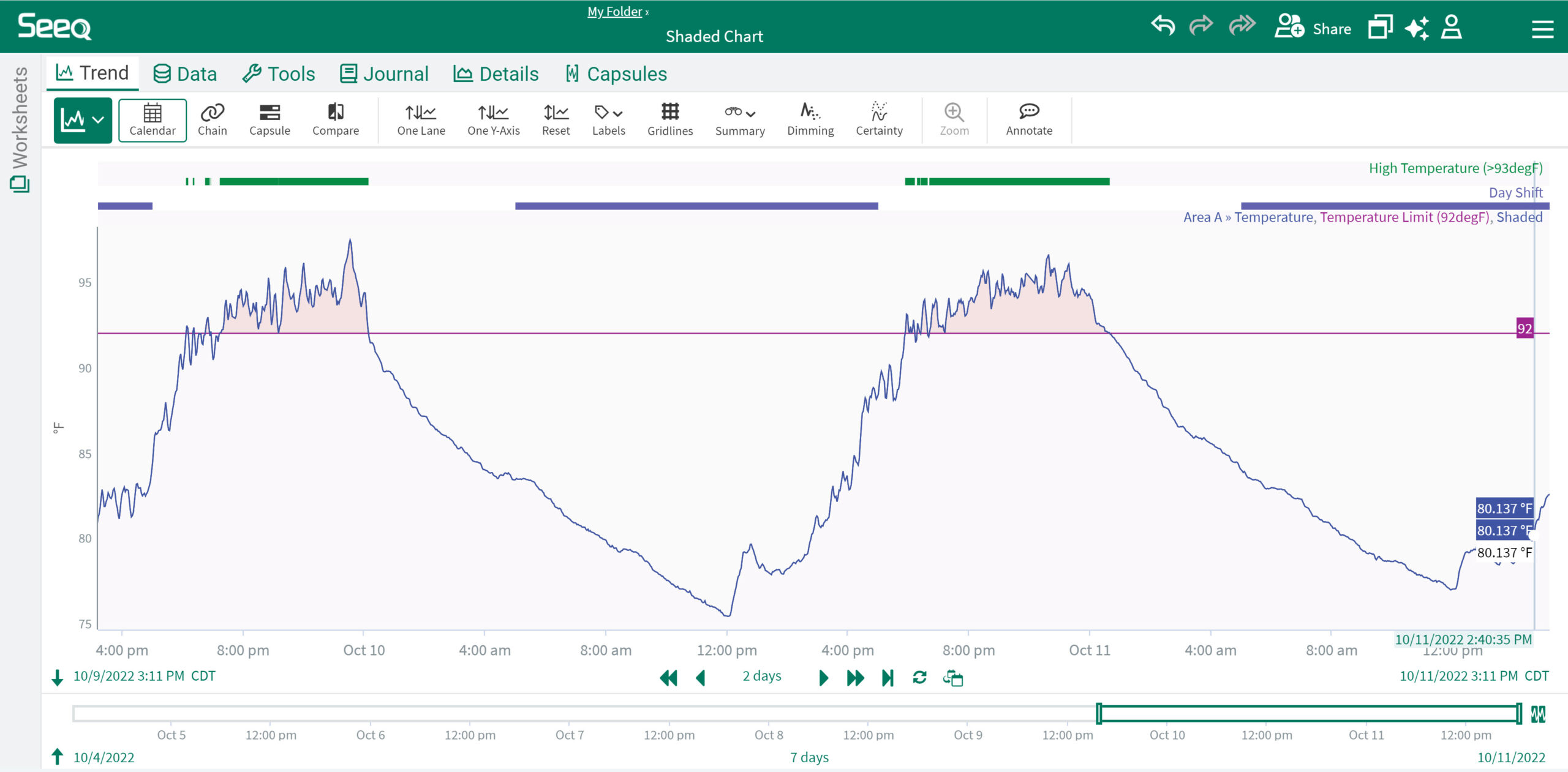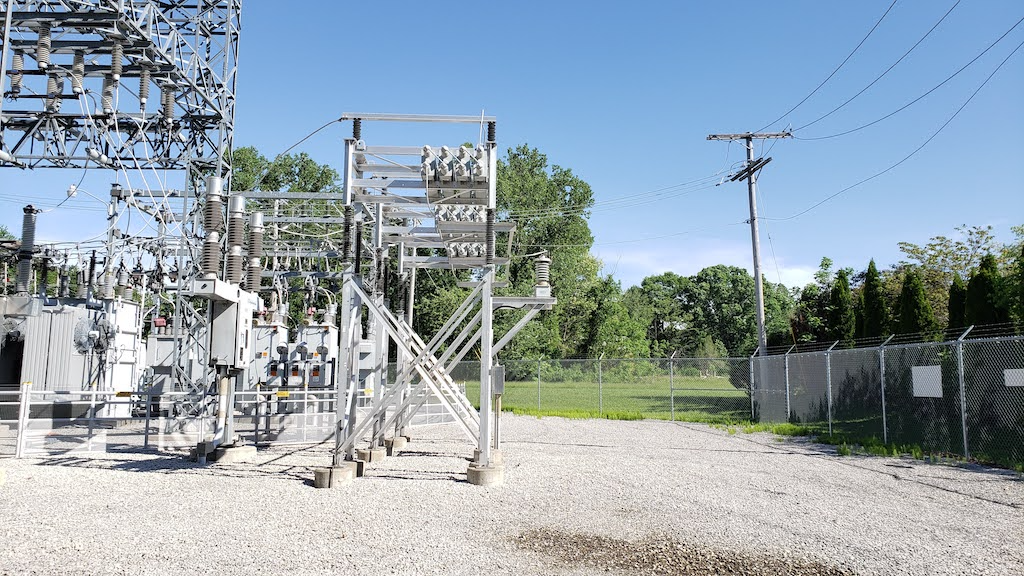Asset management is a critical aspect for manufacturers and it helps turn data into actionable information that can change operations.

Respondents
- Chris Barnes, senior manager, AI & IoT – maintenance & reliability, Kalypso, a Rockwell Automation business, Los Angeles
- Brian Fortney, global capability manager, asset optimization services, Rockwell Automation, Cleveland
- Pratibha Pillalamarri, former senior product marketing manager, Aspen Technology, Houston

Question: What’s the current trend in asset management for industrial and manufacturing facilities?
Pratibha Pillalamarri: An important trend in asset management for industrial and manufacturing facilities is the integration of advanced technologies. Embracing industrial artificial intelligence (AI) and machine learning (ML) strategies has emerged as an important component for optimizing asset performance. This shift reflects a broader recognition among companies and our customers that operational efficiency is intrinsically tied to asset management efficacy.
Central to this framework is the imperative of proactive monitoring of process health and performance. Leveraging the abundance of data available, predictive analytics and AI algorithms provide real-time insights, enabling preemptive actions to avoid potential disruptions. This departure from traditional reactive approaches signifies a strategic shift towards proactive maintenance strategies.
Additionally, there is a growing focus on sustainability, emphasizing environmentally-friendly operational practices to enhance resource efficiency and environmental stewardship.
The combination of these trends signals a new era of efficiency and cost-effectiveness in asset management. By prioritizing continuous operations, reducing downtime and adopting sustainable practices, organizations can achieve significant improvements in productivity and cost savings.
Question: What future trends should engineers, plant managers and designers expect for asset management? (Looking ahead one to two years.)
Chris Barnes: Three megatrends are shaping the future of asset management in the near- to medium-term.
The first is technological and tends to get the most hype – and that’s the accelerating accessibility of consumer-grade AI. Asset management is ripe for AI adoption thanks to the investments made over the past decade-plus equipping assets with sensors connected to the Internet of Things (IoT). With the vast and diverse datasets available from IoT-connected assets, we expect to see routine asset management tasks shift to autonomous workflows performed by AI.
The second megatrend is an increasingly hybrid workforce – both in terms of skills and work environments. AI support tools and IoT-connected sensors enable hybrid operating models for asset management teams that bring together local and remote experts, both equipped with real-time digital asset monitoring and proactive alerting. Making effective use of these tools requires a hybrid of digital and mechanical skills, driving a competitive landscape for hiring the right skills mix to match future ways of working. In fact, 94% of manufacturers expect to maintain or grow their workforce to keep up with AI adoption, according to Rockwell Automation’s 2024 State of Smart Manufacturing report.
The third megatrend is a focus on decarbonization and sustainable outcomes. As organizations prioritize sustainability goals and regulatory requirements become more stringent, asset management teams must integrate environmental considerations into their asset management practices. This includes optimizing energy usage, reducing carbon emissions and extending the lifespan of assets through proactive maintenance and eco-friendly upgrades. Investments in renewable energy sources, energy-efficient technologies and circular economy principles will become central to asset management strategies, driving innovation and reshaping industry standards.
Brian Fortney: The biggest trend should be the increasing integration and the work into the ecosytem of tools. This will drive new thinking about storerooms/spares supply and even workforce training. Increased visibility to lifecycle also will drive new approaches to obsolescence risk.
Pratibha Pillalamarri: A growing emphasis on sustainability is reshaping operations and highlighting the interconnectedness of design decisions with operations and maintenance. Looking ahead, sustainable practices will intertwine more deeply with operational frameworks, requiring alignment between design intent and operational realities.
Moreover, there is a surge in the adoption of IoT and predictive analytics for real-time monitoring, alongside the rise of digital twins and cloud-based solutions for improved asset optimization. AI and ML will be adopted to enable more data-driven decision-making, as resilience and risk management become more important. By embracing these trends, stakeholders can navigate the changing landscape with agility, promoting efficiency, sustainability and resilience.
Question: Describe the successes from using programs and systems that incorporate asset management. This may include Internet of Things-based systems, Industry 4.0, etc.
Pratibha Pillalamarri: YPF’s implementation of Aspen Mtell has led to substantial successes in asset management. Initially monitoring 11 critical pieces of equipment across three refineries, the program expanded to oversee 49 assets, including pumps, compressors, heat exchangers and reactors. Leveraging advanced machine learning capabilities, Aspen Mtell tracked 3,000 sensor tags, facilitating proactive detection of equipment abnormalities.
For example, it identified issues in a vital compressor six months before traditional methods would have, saving almost five days of production. Additionally, the solution detected increased temperatures in the hydrocracking unit, enabling timely maintenance to prevent potential damage and production loss. This success prompted a cultural shift towards proactive maintenance and efficient work prioritization within YPF.
YPF focuses on safeguarding additional assets, optimizing energy efficiency and addressing issues related to fouling and corrosion. In a significant step towards sustainability, YPF introduced agents to monitor emissions from one refinery, with plans to expand this monitoring to all 26 discharge sources. This dedication to sustainability showcases YPF’s proactive stance towards environmental responsibility and drives innovation in Argentina’s oil and gas industry.
Question: What tips would you offer to someone newly tasked with asset management duties?
Brian Fortney: The best advice for someone newly tasked with asset management responsibility would be to get your “blinders” off as quickly as possible and create visualizations to answer: What do you have? What do you need? Where is your risk? Think of it like a map where you have to identify current state to know the distance of your journey to desired state. Once you have these visualizations, identify your strategy to get to desired state, leveraging the information at your fingertips to support investment and action.
Question: How has the integration of artificial intelligence (AI) and machine learning (ML) impacted traditional asset management strategies?
Chris Barnes: AI and ML serve to augment the fundamentals, allowing asset management teams to monitor more assets, improve planning and execution accuracy and make more strategic decisions based on data.
There are three types of problems where AI/ML can be applied:
-
Known problems with known solutions – AI agents pre-trained on asset management principles serve as a force-multiplier for human experts. By monitoring a very large number of assets to detect and prioritize known problems, human experts are freed up to focus on only the most pressing issues.
-
Known problems needing customized solutions – ML can help tailor existing asset management strategies using both real-time operational inputs and statistical analysis learned over large historical datasets from in-field assets. By accounting for operational disturbances and learned failure patterns, AI agents can advise improvements to current strategies.
-
Complex problems with to-be-discovered solutions – Specific ML techniques like deep reinforcement learning can identify asset management strategies that yield optimal system-wide results. These techniques accelerate data-driven workflows like root cause analysis, leveraging large and diverse datasets of operational inputs and human decision-making, to recommend strategies that would take human operators years of analysis to achieve.
Pratibha Pillalamarri: The integration of AI and ML has transformed traditional asset management strategies, bringing in a new era of efficiency and effectiveness. Traditional practices involved a combination of reactive maintenance practices, often treating equipment and processes in isolation. However, with the emergence of AI and ML technologies, customers are realizing the interconnectedness of equipment and processes.
Advanced technologies enable customers to optimize processes by identifying optimal operating windows, leveraging both process and maintenance data. By analyzing vast amounts of data, AI and ML can predict equipment and process issues ahead of time, providing prescriptive guidance on how to address them, including adjustments to operating regimes. This predictive and prescriptive approach shifts asset management from reactive to proactive, leading to improved reliability, efficiency, and cost-effectiveness.
Question: How do you see the role of human expertise evolving in conjunction with the increasing use of AI in asset management?
Chris Barnes: The role of human expertise will evolve and elevate rather than diminish. AI excels at automating routine analytical workflows and producing insights from data, allowing human workers to shift from manual data-crunching tasks to strategic decision-making, planning, and action. Ultimately, AI makes many asset management workflows more accessible to equipment operators by streamlining the data-analysis tasks.
For example, AI can automate asset performance monitoring and downtime tracking to help pinpoint bad actors, equipping operators of that equipment with the insights needed to design and execute value-adding continuous improvement initiatives.
Pratibha Pillalamarri: While AI excels at analyzing vast amounts of data and identifying patterns, human expertise remains crucial for interpreting insights, making strategic decisions, and implementing these solutions.
One evolving aspect of human expertise is the ability to understand and interpret AI-generated insights. Experts bring contextual understanding and domain knowledge to validate recommendations, assess their relevance to operational contexts and identify potential limitations or biases in data or algorithms. Additionally, they help oversee their implementation and refine AI models through feedback that enhances accuracy and relevance. Insights can then be translated into actionable strategies aligned with organizational objectives. While AI can identify issues and recommend solutions, experts evaluate feasibility, consider broader organizational goals and constraints, and ensure successful implementation.
The expanding role of AI complements human expertise, driving informed decisions, optimizing asset performance, and ensuring operational excellence.



